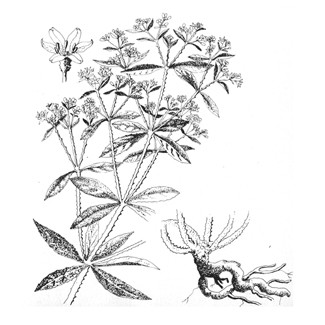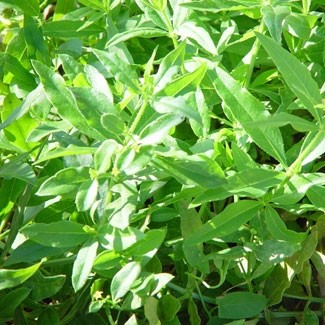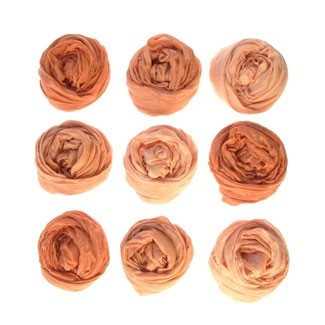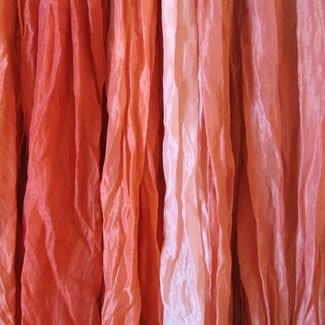| Madder
Rubia tintctorum L.
The Plant
Already used in prehistoric times, it is the most ancient and famous plant for producing the color red.
In India it is called “Chay”, in Persia and in Egypt “Munjeet”.
Even in the Nordic countries Madder has been known of since ancient times.
Madder is a perennial plant belonging to the Rubiaceae with small whitish or delicate yellowish green flowers. Its berries, containing seeds, are firstly reddish and then black. It has a large number of long reddish roots with tetragonal caules.
After three years, the roots reach a thickness of an inch and contain the majority of the color matter. Plinius praises it is a plant adapted to dye wool and leather and states that the Italian species is superior to foreign ones.
From Medieval times on, until the discovery of synthetics, the Madder contained one of the most important coloring substances and was the subject of large cultivations and high level trading. The roots of the Madder were sold dried and cleaned or even ground, and took on different names depending on where it came from.
Usage
The dried roots are freed from the soft surface film and then ground. They are dark brown, have an aromatic smell and sweet and sour taste. The color is obtained through fermentation.
It is used in medicine and for stomach aliments.
Color characteristics
Excellent resistance to light and washing in water.
Bibliography
Franco Brunello “ L’arte della tintura nella storia dell’umanita” Neri Pozza editore – Vicenza;
Gunter Meier ” Colori vegetali. Ricerca, produzione, utilizzo” Associazione Casanova
The Plant
Already used in prehistoric times, it is the most ancient and famous plant for producing the color red.
In India it is called “Chay”, in Persia and in Egypt “Munjeet”.
Even in the Nordic countries Madder has been known of since ancient times.
Madder is a perennial plant belonging to the Rubiaceae with small whitish or delicate yellowish green flowers. Its berries, containing seeds, are firstly reddish and then black. It has a large number of long reddish roots with tetragonal caules.
After three years, the roots reach a thickness of an inch and contain the majority of the color matter. Plinius praises it is a plant adapted to dye wool and leather and states that the Italian species is superior to foreign ones.
From Medieval times on, until the discovery of synthetics, the Madder contained one of the most important coloring substances and was the subject of large cultivations and high level trading. The roots of the Madder were sold dried and cleaned or even ground, and took on different names depending on where it came from.
Usage
The dried roots are freed from the soft surface film and then ground. They are dark brown, have an aromatic smell and sweet and sour taste. The color is obtained through fermentation.
It is used in medicine and for stomach aliments.
Color characteristics
Excellent resistance to light and washing in water.
Bibliography
Franco Brunello “ L’arte della tintura nella storia dell’umanita” Neri Pozza editore – Vicenza;
Gunter Meier ” Colori vegetali. Ricerca, produzione, utilizzo” Associazione Casanova




